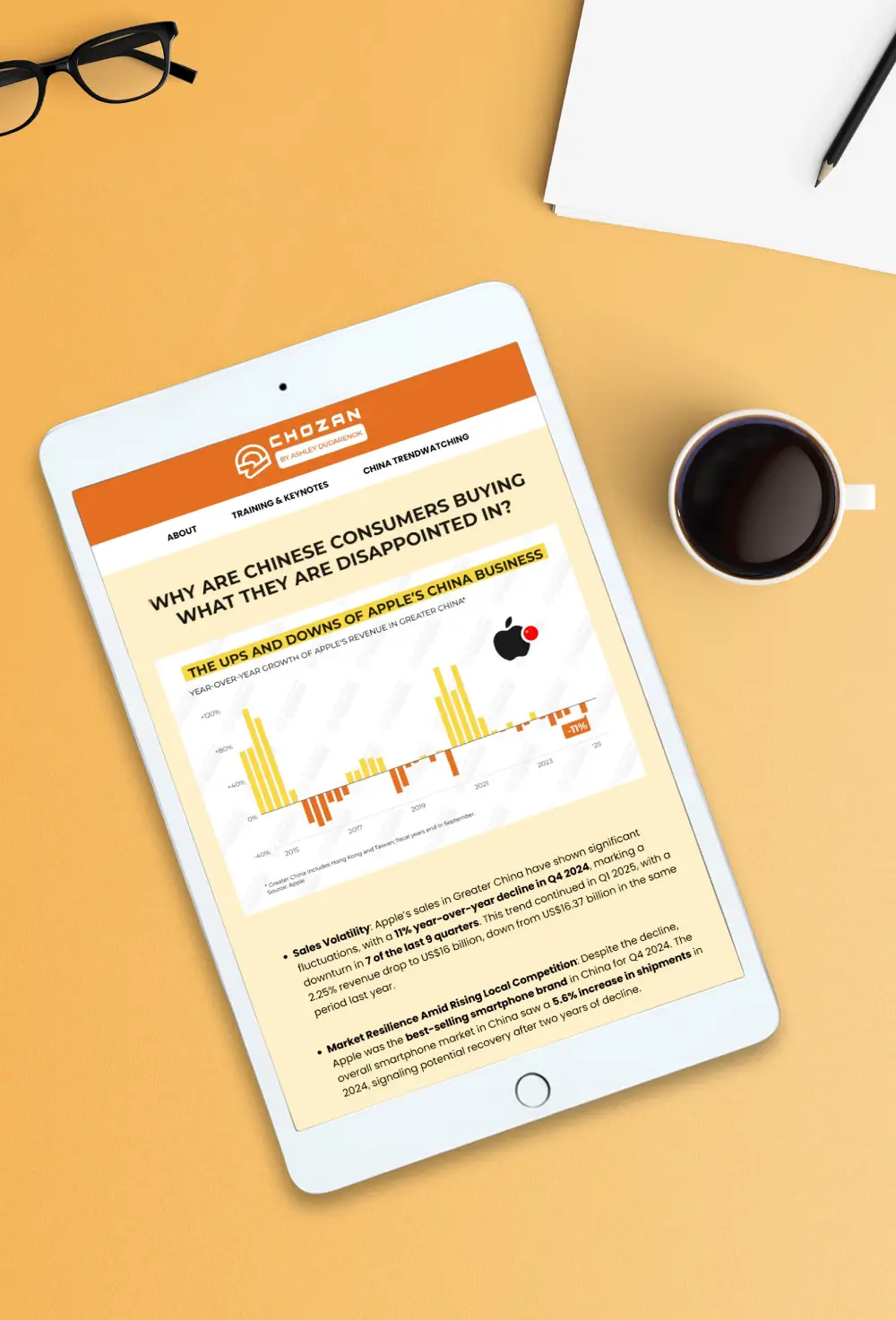CONTENT

By: Ashley Dudarenok
Updated:
China’s social credit system is a national framework that tracks legal and commercial integrity. It combines government databases, court records, and regulatory lists to reward compliance and penalize violations. The system aims to improve trust in transactions, enforce existing laws, and reduce fraud across sectors.
As of 2025, it remains under development. National platforms share credit data among ministries, while local governments test industry-specific pilots. Together, these programs form an administrative enforcement tool—not a single score or surveillance network. It connects data already collected by agencies to ensure obligations are met and penalties are applied consistently.
Recent reforms have focused on unifying credit standards, protecting personal data, and enhancing legal oversight. The central government’s 2025 guideline emphasizes lawful data use, privacy protection, and fair procedures for listing or delisting entities. This article examines how the system operates, its legal structure, regional pilots, and future reforms shaping China’s credit governance.

The origins of the social credit system date back to the late 1990s and early 2000s, when China’s rapid market liberalization exposed deficiencies in legal enforcement and credit infrastructure. Fraud, counterfeit products, and contract defaults eroded trust and hindered economic development.
The State Council’s 2014 Outline for Building a Social Credit System called for a comprehensive framework to establish government credibility, improve business integrity, and raise social moral standards.
The plan envisioned unified credit information platforms, mechanisms to reward trustworthy actors and punish those who violated laws, and pilot programs in select regions. However, because China lacked a national credit law and many ministries controlled their own data, implementation proceeded unevenly.
Between 2016 and 2024, China shifted from fragmented local pilots to a coordinated national framework. The National Credit Information Sharing Platform (NCISP) became the core hub, linking ministries, provincial databases, and regulators. By early 2025, it had collected over 80.7 billion records, covering approximately 180 million businesses.
A separate nationwide financing and credit service platform was launched to support small and medium enterprises. It connects verified credit data with financial institutions, enabling firms to obtain loans based on their compliance history. By February 2025, the platform had facilitated ¥37.3 trillion (approximately US$5.18 trillion) in financing, including ¥9.4 trillion (approximately US$1.31 trillion) in credit loans.
Courts strengthened judicial enforcement through the judgment defaulter list, which names individuals and companies that ignore valid rulings. Listed parties are subject to restrictions on luxury travel, premium services, and high-value purchases until their debts or fines are settled. These measures turned legal judgments into enforceable outcomes across multiple sectors.
Together, these developments marked a shift from scattered experiments to national integration, setting the stage for unified regulation under the 2025 guideline.
On 31 March 2025, the Communist Party’s Central Committee and the State Council released a guideline on improving the social credit system to promote high‑quality development. This document comprises 23 measures aimed at:
It acknowledges problems such as inconsistent regulatory frameworks and insufficient data sharing, and emphasizes that credit plays a key role in optimizing the business environment and promoting financial services.
Notably, the guideline emphasizes the principle of “making data available but not visible” and recommends utilizing blockchain technology to ensure traceability. It also emphasizes information security and individualizes the principle of “making data available but not visible,” suggesting the use of rights, banning excessive collection of personal data, and preventing unauthorized use.
In short, the 2025 guideline aims to unify disparate pilot projects, strengthen the legal foundations, and strike a balance between governance and privacy protection.

China’s social credit system runs on an integrated data network that connects government agencies, regulators, courts, and businesses. The National Credit Information Sharing Platform (NCISP), managed by the National Development and Reform Commission (NDRC), serves as the core hub. It gathers and shares credit data from ministries and provincial platforms.
The NCISP links to provincial portals that maintain “red lists” of compliant entities and “blacklists” of serious violators. It also connects with the Supreme People’s Court’s defaulter list and the State Taxation Administration’s arrears database to facilitate enforcement coordination.
A nationwide financing and credit service platform helps small and micro-businesses access multiple lenders through one credit submission, reducing overlap and speeding up approvals. Blockchain technology ensures traceability and data security, allowing only authorized access.
The People’s Bank of China’s Credit Reference Center (zhengxin) records borrowing and repayment histories from financial institutions. Although often linked to social credit, zhengxin operates separately under financial privacy laws. Banks and fintech firms use their data to assess credit risk and lending integrity.
It encourages agencies to publicize credit information lawfully, rationally, and reasonably, and to allow disciplined entities to restore trust after taking corrective actions.
China’s social credit measures derive from administrative regulations, sectoral laws, and judicial interpretations. For example, the Supreme People’s Court and other agencies released joint memoranda specifying how the judgment defaulter list operates. Individuals are added only after a court judgment becomes effective, and they refuse to fulfill obligations despite having the ability to do so.
The China Justice Observer notes that these individuals receive written notices and can apply for removal upon repayment. Once listed, they face restrictions on consumption beyond necessities:
These bans target high‑level consumption rather than essential needs and are meant to coerce compliance rather than punish poverty.
The 2025 guideline clarifies that disciplinary measures must have a legal basis and clear procedures, and that enforcement must be proportionate to the severity of the offense. It calls for the creation of a “national list of basic penalty measures for untrustworthiness” and a catalog of sector‑specific punishments.
Agencies must inform subjects before imposing penalties and provide channels for appeals. Courts and regulators are instructed to remove entities from blacklists promptly after they fulfill obligations, to prevent long‑term stigmatization.
The social credit framework extends beyond courts to myriad regulators. The National Development and Reform Commission coordinates cross‑sector joint disciplinary actions. For example, the State Taxation Administration lists serious tax offenders; the People’s Bank of China records those who fraudulently use bank accounts; environmental authorities name companies that violate emissions limits; and customs agencies identify import–export violators.
The 2025 guideline calls for the establishment of new blacklists in the real estate, internet services, human resources, and energy sectors, accompanied by clear disciplinary measures. It also orders regulators to establish credit evaluations for practitioners in finance, healthcare, education, and environmental protection, linking professional licenses and certifications to credit records.
Licensed professionals who breach regulations may face license suspension and inclusion on industry blacklists, while those who comply receive preferential treatment from regulators.

Researchers from Stanford’s Freeman Spogli Institute studied a local social credit system they call Meritown, considered a national model. Meritown’s program starts each resident with 1,000 points (level A). Points are deducted for violations and added for approved actions.
The city’s 389 rules fall into multiple categories: 124 rules reward positive behavior, while 265 rules punish negative acts. Notably, 83% of severe behaviors and 66% of total penalties correspond to violations already regulated by Chinese law or local policies; the social credit system thus echoes existing enforcement rather than creating new offenses.
Severe infractions, such as political petitioning, tax evasion, providing false information on social media, refusing to comply with quarantine measures, or engaging in physical confrontation with police, can result in immediate downgrading to lower credit levels.
The system classifies residents into eight bands:
Residents in levels AAA and AA receive perks such as heating subsidies, priority school admissions, and simplified administrative approvals. In contrast, those at level D may face police visits, house inspections, and denial of government support.
Meritown’s system collects data from multiple agencies and engages local grid administrators to report behaviors. Government employees are subject to stricter scrutiny and have more opportunities for rewards, while rural residents face more penalties and fewer rewards than urban dwellers.
Researchers argue that Meritown’s design gives local officials the flexibility to adjust scoring rules according to campaign priorities; for example, during the COVID-19 pandemic, new rules penalized leaving home without a mask and rewarded volunteering.
The city’s system also demonstrates the discretionary and uneven nature of local social credit programs: scoring criteria vary by district, and enforcement depends on frontline administrators. While national authorities have hailed Meritown as a model, the program shows how local innovations can diverge from central intentions and raise questions about fairness.
While media attention often focuses on individuals, businesses are the primary subjects of China’s social credit system. The corporate social credit system (CSCS) consolidates data on firms’ regulatory compliance and trading behavior.
According to legal advisors, companies must submit data on
Regulators then assign ratings or place companies on blacklists or red lists. High‑scoring firms may enjoy easier access to bank loans, preferential terms from suppliers, fewer inspections, and faster government approvals. In contrast, low‑scoring firms face increased inspections, delays, exclusion from subsidies and procurement, and public shaming.
For instance, environmental regulators maintain blacklists of polluters; companies that exceed emission limits risk losing emission permits and financing. Customs authorities rank importers and exporters; top‑ranked companies receive expedited clearance, while those with poor records undergo extra inspections.
The NDRC’s 2025 guideline plans to create new blacklists for real estate, internet services, human resources, and energy, and standardize penalty measures. It also requires due process and proportionate punishment: penalties must not exceed legal mandates, and firms can appeal before inclusion on blacklists.
In the private sector, companies like Ant Group’s Sesame Credit offer personal credit scores ranging from 350 to 950. According to the Beijing Review, Sesame’s algorithm considers online shopping habits, credit card repayment, and other relevant factors.
High scores enable deposit-free rentals, facilitate easier loan applications, and offer perks such as hotel upgrades, while low scores restrict access to these benefits. However, Sesame Credit is voluntary and operates like a loyalty program; it is not integrated into the government’s social credit system and does not impose legal penalties.
The People’s Bank of China rejected Sesame’s application for a personal credit license in 2017, ensuring a degree of separation between commercial scoring and state regulation.
Tencent, JD.com, and other firms have similar programs. These services highlight the growing demand for consumer credit information, but they remain independent of the government’s regime.
Sector‑Specific Programs and Demonstration Zones
The State Council has designated social credit demonstration cities to showcase innovative practices. In these zones, local governments integrate credit into urban management—for example, awarding points for voluntary service and deducting points for littering or traffic offenses.
However, many of these experiments have been criticized for being overly punitive or intrusive. Wenzhou and Rongcheng reformed their programs in response to public backlash, with the central government emphasizing voluntary participation and reward-oriented incentives.
Demonstration zones also test sectoral innovations such as environmental credit scoring, smart transportation systems that offer discounts to punctual passengers, and public health campaigns that provide health insurance rebates for healthy lifestyles.
Because these projects vary widely across regions and often lack legal authority, their results have not been scaled nationally.

Despite national platforms, the system remains decentralized. Ministries, regulators, and local governments maintain separate databases, leading to inconsistent listing criteria and enforcement. The 2025 guideline aims to unify standards, but differences in regional capacity and administrative coordination persist, slowing progress.
Although rules require notice and appeals, enforcement practices vary. Some individuals learn of restrictions only when attempting to travel or complete transactions. Legal scholars advocate for standard notification templates, accessible appeals, and expedited delisting after compliance. These measures are crucial for maintaining fairness and credibility.
The principle of “data available but not visible” aims to prevent unauthorized sharing, but local implementation remains uneven. Regional apps and data exchanges risk oversharing or weak encryption. Ensuring data security and limiting access to authorized agencies are ongoing challenges.
Specific local pilots blurred the line between legal compliance and moral behavior, assigning points for courtesy or community participation. Central authorities have since discouraged this approach, clarifying that social credit must focus strictly on legal and administrative conduct.
Studies show that rural residents and low-income individuals face more penalties and fewer reward opportunities than their urban counterparts. Limited digital access and fewer formal employment channels make it harder for these groups to earn positive records. Addressing these disparities remains a policy priority for future reforms.
Between 2025 and 2030, China plans to introduce a unified social credit law to consolidate fragmented regulations. The draft is expected to define what constitutes untrustworthy conduct, establish limits on data collection and retention, and outline nationwide procedures for appeals and delisting. Standardized legislation would provide regulators and businesses with clear legal boundaries, thereby increasing confidence among both domestic and foreign stakeholders.
The government links social credit reform to economic modernization. A transparent credit environment is expected to reduce transaction costs, enhance business credibility, and promote fair competition. Regulators aim to expand credit-based products—such as insurance, factoring, and performance bonds—so trustworthy entities can leverage their compliance history for financing advantages.
Emerging technologies will play a role in the future system. Authorities advocate using blockchain to ensure traceability and tamper‑proof records. Artificial intelligence could help analyze large volumes of credit data and detect fraud. Yet the government stresses that any technology use must comply with data protection laws and avoid excessive collection.
Recent legislation, such as the Personal Information Protection Law (PIPL), enacted in 2021, grants individuals the right to know, to consent, and to request the deletion of their personal data. Future reforms will need to strike a balance between the drive for digital governance and the protection of privacy rights.
As Chinese companies expand overseas, regulators envision cross‑border credit cooperation. The 2025 guideline proposes supporting credit service institutions to “go global” and participate in international standard-setting.
This could involve collaboration with foreign credit bureaus, financial regulators, and trade partners to recognize Chinese credit records and facilitate financing abroad.
However, differences in legal systems and data protection regimes pose challenges. China may also use social credit to monitor companies operating along the Belt and Road, ensuring compliance with environmental and labor standards.

China’s social credit reforms are reshaping how brands operate, build trust, and manage compliance across every sector. For global leaders, success in this environment depends on credible local insight—knowing how regulators think, how data is shared, and how reputation mechanisms influence finance, partnerships, and consumer confidence.
At ChoZan, we help international teams decode these shifts in practice.
Through expert calls with former policymakers, legal analysts, and platform operators, we explain how the credit framework affects market access, advertising, logistics, and e-commerce partnerships.
Our custom research sprints map regulatory changes and identify opportunities for compliant innovation, from corporate scoring to supply-chain transparency.
If your company plans to expand or deepen operations in China, don’t navigate its evolving credit ecosystem alone.
Work with ChoZan to turn regulatory knowledge into a strategic advantage.
Foreign firms registered in China are subject to the same compliance assessments as domestic entities. Credit records track tax filings, customs declarations, and environmental performance. A clean record can shorten administrative procedures and ease access to government contracts.
Violations—such as overdue taxes or safety breaches—may trigger additional inspections or restrictions, underscoring the importance of transparent internal compliance systems.
No. China’s social credit system does not assign a universal score to individuals. Instead, it collects data across agencies to monitor specific legal or administrative actions. Different regulators use their own records to enforce penalties or rewards. The system operates as a network of databases, rather than a centralized scoring platform or a personal rating issued by the state.
Yes. Individuals and companies can view their credit status through official government websites such as Credit China or regional portals. These sites list active blacklists, red lists, and enforcement outcomes. Users can verify whether they appear on any lists, submit documentation for correction, or apply for delisting once their obligations, such as fine payments, are fulfilled.
Courts are central to the system. Once a judgment becomes final, courts report noncompliant parties to the defaulter list. This listing restricts certain nonessential activities until obligations are met.
The judiciary’s involvement ensures that penalties are tied to formal legal outcomes rather than administrative discretion, creating a direct link between law enforcement and public accountability.
Yes. Many professional sectors, including law, medicine, finance, and accounting, maintain separate credit files for their members. Regulators record compliance with licensing rules, client protection standards, and ethics requirements.
Consistent violations can lead to license suspension or disqualification. High-performing professionals may gain priority in approvals or official recognition. This approach promotes self-regulation and professional integrity within each field.
Blacklists are publicly disclosed and signal serious or repeated breaches of trust, while penalty records include all administrative actions, whether minor or severe. Being fined does not automatically place someone on a blacklist. Agencies evaluate intent, frequency, and severity before making listings public, ensuring that only significant misconduct results in broad reputational consequences.
Financial institutions may reference publicly available credit information, but they primarily rely on data from the People’s Bank of China’s Credit Reference Center. The social credit system provides additional context, such as tax or legal compliance, but banks still apply independent risk assessments. This separation preserves financial privacy and ensures that creditworthiness evaluations align with lending regulations.
A company can submit a formal appeal through the responsible regulator or the Credit China portal. It must provide documentary proof—such as receipts or court orders—showing that it has met its obligations. Once verified, the agency is required to remove the listing promptly. Persistent errors can be escalated through administrative review or judicial proceedings.
Regulators apply progressive penalties. A first violation may trigger a warning or short-term monitoring, while repeated breaches can result in blacklist inclusion or higher inspection frequency. Entities that promptly correct mistakes can avoid further sanctions. This graduated approach encourages compliance without imposing permanent punishment for isolated errors.
No. All restrictions have defined removal conditions. Once the underlying issue—such as unpaid debts, false filings, or unfulfilled judgments—is resolved, regulators must clear the record. Entities can apply for delisting, and agencies are legally obligated to process requests within set timeframes. The objective is compliance restoration, not indefinite penalties.
Cities increasingly link verified credit records to everyday services. Residents with strong records may qualify for faster business registration, simplified permit renewals, or reduced document requirements. The goal is to reward reliability with administrative convenience. These programs remain voluntary and apply only where backed by legal authority, not moral evaluation.
Children and individuals without full legal capacity are excluded from enforcement lists. Regulations limit the processing of sensitive data related to health, education, or social welfare. Agencies must anonymize or restrict such information to authorized use only. This ensures that enforcement measures target responsible legal entities rather than individuals who are dependent.
Yes, within China’s jurisdiction. Platforms and vendors engaged in cross-border trade are evaluated on customs compliance, taxation, and product safety. Repeated infractions can result in review of export licenses or suspension of trading privileges. Transparent reporting benefits both regulators and international buyers by signaling which businesses operate within legal and ethical boundaries.
Before adding records to the national platform, agencies must verify the information against reliable sources, such as court rulings, tax filings, or inspection reports. Each entry requires a responsible officer’s digital signature. Any discrepancy triggers an internal review. This multilayer verification process helps reduce wrongful listings and strengthens public confidence in data reliability.
AI is expected to enhance risk detection and fraud prevention by analyzing large datasets from multiple agencies. Algorithms can identify unusual transaction patterns or false reporting faster than manual audits. However, all AI applications must comply with China’s data protection and cybersecurity laws, ensuring decisions remain explainable, auditable, and subject to human review.
By subscribing to Ashley Dudarenok’s China Newsletter, you’ll join a global community of professionals who rely on her insights to navigate the complexities of China’s dynamic market.
Don’t miss out—subscribe today and start learning for China and from China!

Top Live Streaming Platforms in China for 2025


8 Photo-Sharing Alternatives to Pinterest in China
Ashley Dudarenok is a leading expert on China’s digital economy, a serial entrepreneur, and the author of 11 books on digital China. Recognized by Thinkers50 as a “Guru on fast-evolving trends in China” and named one of the world’s top 30 internet marketers by Global Gurus, Ashley is a trailblazer in helping global businesses navigate and succeed in one of the world’s most dynamic markets.
She is the founder of ChoZan 超赞, a consultancy specializing in China research and digital transformation, and Alarice, a digital marketing agency that helps international brands grow in China. Through research, consulting, and bespoke learning expeditions, Ashley and her team empower the world’s top companies to learn from China’s unparalleled innovation and apply these insights to their global strategies.
A sought-after keynote speaker, Ashley has delivered tailored presentations on customer centricity, the future of retail, and technology-driven transformation for leading brands like Coca-Cola, Disney, and 3M. Her expertise has been featured in major media outlets, including the BBC, Forbes, Bloomberg, and SCMP, making her one of the most recognized voices on China’s digital landscape.
With over 500,000 followers across platforms like LinkedIn and YouTube, Ashley shares daily insights into China’s cutting-edge consumer trends and digital innovation, inspiring professionals worldwide to think bigger, adapt faster, and innovate smarter.
Please check your email and confirm your subscription.

Please check your email and confirm your subscription.

Please check your email and confirm your subscription.